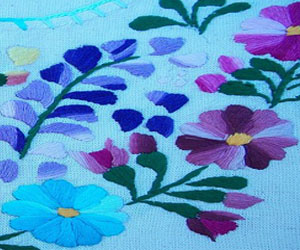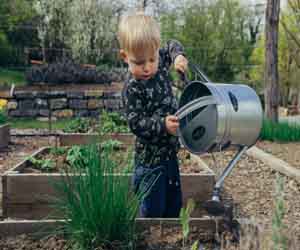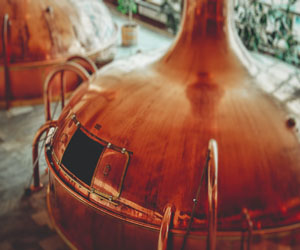


A Glimpse Into Monastery Brewing

Monastery brewing, a sacred tradition that has persisted for centuries, offers a unique and flavorful window into the world of beer. These hallowed institutions have long been associated with prayer and contemplation, but many people are unaware of the monastic legacy in the art of brewing. Monasteries across the globe have played a significant role in preserving and advancing brewing techniques, producing some of the most renowned and sought-after beers.
The Origins Of Monastery Brewing: The roots of monastic brewing can be traced back to medieval Europe, when monasteries were not only centers of spirituality but also hubs of agriculture and craftsmanship. Monks, skilled in cultivation and brewing, often brewed beer to support themselves and their communities. The monastic brewing tradition was born out of necessity and evolved into an art form celebrated for its unique and high-quality beers.
Brewing As A Form Of Self-Sufficiency: Monasteries were largely self-sustaining communities, and brewing became a valuable source of income for these religious orders. Monks brewed beer for their own consumption and to trade with neighboring communities. The high-quality beer produced within the monastery walls garnered a reputation for excellence and, over time, became an essential part of monastic life.
Brewing's Role In Monastic Life: For many monastic orders, brewing was not just a means of financial support; it was also deeply entwined with their way of life. Brewing was seen as a form of prayer, a means of connecting with the divine. Monks believed that by perfecting their brewing skills, they were glorifying God and serving their fellow humans through the creation of a sublime beverage.
The Trappist Brewing Tradition: One of the most well-known monastic brewing traditions is that of the Trappist monks, a strict Catholic religious order. Trappist monasteries, especially those in Belgium, have achieved international acclaim for their exceptional ales. Beers like Chimay, Westmalle, and Orval are iconic examples of Trappist brewing, often brewed following centuries-old recipes and using traditional methods.
Preserving Tradition In The Modern Age: While many monasteries have continued to brew their traditional beers for centuries, some have opened their doors to the public, allowing visitors to experience the art of monastic brewing. These monasteries often generate revenue from beer sales and reinvest the profits in charitable endeavors.
Monastic Brewing Beyond Beer: While beer is the most celebrated product of monastic brewing, some monasteries produce other alcoholic beverages, such as liqueurs and spirits. Chartreuse, a renowned herbal liqueur, is crafted by Carthusian monks in France and is considered one of the finest liqueurs in the world.
Monastery brewing is a testament to the enduring tradition and craftsmanship that has thrived within the sacred confines of these religious institutions. The beers crafted by monks continue to be revered by beer enthusiasts, both for their exceptional quality and the history they embody. These brews serve as a bridge between the divine and the earthly, reminding us that the art of brewing, like the monastic life, is a profound and enduring calling. So, the next time you raise a glass of Trappist ale, you're not just savoring a fine beer, but also toasting to the centuries-old legacy of monastic brewing.






 The World Of Textile Art: Beyond the realm of fashion, textile art is a profound expression of fabric creativity. Artists use various techniques like embroidery, quilting, and weaving to craft stunning pieces that blend traditional and contemporary elements. Each piece tells a story, often reflecting the artist's emotions, experiences, and cultural influences.
The World Of Textile Art: Beyond the realm of fashion, textile art is a profound expression of fabric creativity. Artists use various techniques like embroidery, quilting, and weaving to craft stunning pieces that blend traditional and contemporary elements. Each piece tells a story, often reflecting the artist's emotions, experiences, and cultural influences.
A Time-Honored Craft That Endures
 Techniques And Materials: Traditional pottery is characterized by a profound connection between the potter and the materials. Typically, it involves handbuilding techniques such as coiling, pinching, and slab-building, as well as the use of locally sourced clay and other natural materials. The techniques and materials used are often passed down through generations, preserving the authenticity and heritage of each style.
Techniques And Materials: Traditional pottery is characterized by a profound connection between the potter and the materials. Typically, it involves handbuilding techniques such as coiling, pinching, and slab-building, as well as the use of locally sourced clay and other natural materials. The techniques and materials used are often passed down through generations, preserving the authenticity and heritage of each style.
Regional Variations: One of the most compelling aspects of traditional pottery is its regional diversity. Different cultures have developed their own unique styles, forms, and designs. For example, the delicate blue and white porcelain of China is world-famous, while the intricately painted talavera ceramics of Mexico are celebrated for their vibrant patterns. Native American tribes have their distinctive pottery traditions, often incorporating symbolism and motifs reflecting their cultural heritage.
Cultural Significance: Traditional pottery is not just a craft; it is a reflection of cultural identity and history. Many traditional pottery forms have spiritual, ceremonial, or ritualistic importance within their respective cultures. In Native American Pueblo communities, for instance, pottery is often used in religious ceremonies, and the designs have deep cultural significance. In Japan, the tea ceremony is closely tied to the creation and appreciation of traditional pottery, such as the iconic Raku ware.
Preservation Of Craftsmanship: One of the most significant contributions of traditional pottery is its role in preserving craftsmanship.
Exploring The Benefits
 Medicinal Properties
Medicinal Properties
Herbs have been used for centuries as natural remedies for a wide range of ailments. Lavender is renowned for its calming and soothing properties, chamomile for its digestive benefits, and peppermint for its ability to alleviate headaches. Growing these herbs allows you to harness their medicinal powers for home remedies and holistic wellness.
Aromatherapy
The fragrant oils found in herbs are not just for flavor and aroma. They also have therapeutic qualities. Lavender, for instance, is widely used in aromatherapy to promote relaxation and reduce stress. Aromatic herbs can transform your garden into an outdoor sanctuary for your senses.
Environmental Benefits
Herb gardens contribute to a more sustainable and eco-friendly lifestyle. By growing your herbs, you reduce the demand for commercially cultivated, chemically treated herbs. This practice conserves resources and minimizes the environmental impact of herb production.
Cost-Effective
Maintaining an herb garden can save you money in the long run. Store-bought herbs can be expensive, and they often come in quantities larger than you need, leading to waste. By growing your herbs, you can have a fresh supply on hand while minimizing expenses.
The Healing Power Of Creativity
 The Benefits Of Therapeutic Crafts
The Benefits Of Therapeutic Crafts
Stress Reduction: The act of creating something with your hands can be meditative in itself. Whether you're knitting, painting, or sculpting, the rhythmic and repetitive motions can help lower stress levels, ease tension, and promote relaxation.
Self-Expression: Therapeutic crafts offer a non-verbal means of self-expression. You can convey your emotions, thoughts, and feelings through your creative work, allowing for a deeper connection with yourself.
Sense Of Accomplishment: Completing a craft project, no matter how simple, can provide a sense of achievement and boost self-esteem. This can be particularly meaningful for those struggling with self-doubt or anxiety.
Social Connection: Many therapeutic crafts can also be social activities. Joining a knitting club, taking a pottery class, or participating in a painting workshop provides opportunities for social interaction and the building of supportive communities.
A Blooming Start To Your Green Journey
 Planning Your Garden
Planning Your Garden
A well-thought-out plan can make gardening more enjoyable and less overwhelming:
Design: Sketch your garden layout and decide where you want to place different plants. Consider factors like plant height, growth habits, and aesthetics.
Plant Selection: Choose plants that are suitable for your climate, soil type, and level of maintenance. Local garden centers can provide helpful recommendations.
Maintenance Schedule: Create a maintenance schedule that includes watering, fertilizing, and pruning. Regular tasks will help your garden flourish.
Essential Gardening Tools
Every gardener needs a basic set of tools:
Hand Trowel: For digging small holes and transplanting seedlings.
Pruning Shears: To trim and shape plants.
 Floral Designs: Flowers are a prevalent theme in embroidery, symbolizing beauty, growth, and life. From delicate daisies to elaborate roses, floral designs are celebrated for their elegance and versatility.
Floral Designs: Flowers are a prevalent theme in embroidery, symbolizing beauty, growth, and life. From delicate daisies to elaborate roses, floral designs are celebrated for their elegance and versatility.
Geometric Patterns: Geometric shapes and repetitive patterns are a staple in many traditional embroidery designs. These symmetrical arrangements create a sense of order and balance.
Animal Motifs: Animals, both domestic and wild, are often featured in embroidery designs. They can represent local fauna, mythological creatures, or personal totems, adding an element of storytelling to the art.
Religious And Symbolic Designs: Embroidery often incorporates religious symbols, such as crosses or mandalas, or other motifs that hold cultural or spiritual significance.
Contemporary Innovations: In the modern era, embroidery designs have evolved to embrace contemporary aesthetics and innovations.
 A Personal Touch: Handcrafted creations carry with them a unique, personal touch that simply cannot be replicated by machines. Each piece is a labor of love, a reflection of the artisan's skill, imagination, and passion. Whether it's a hand-carved wooden sculpture, a hand-stitched leather bag, or a hand-painted ceramic vase, the individuality of the artist is imprinted on the work, making it distinct and full of character.
A Personal Touch: Handcrafted creations carry with them a unique, personal touch that simply cannot be replicated by machines. Each piece is a labor of love, a reflection of the artisan's skill, imagination, and passion. Whether it's a hand-carved wooden sculpture, a hand-stitched leather bag, or a hand-painted ceramic vase, the individuality of the artist is imprinted on the work, making it distinct and full of character.
The Art Of Craftsmanship: Craftsmanship is at the heart of every handcrafted creation. Artisans invest time and effort honing their skills, often dedicating years to mastering their craft. This expertise shines through in the quality of their work. Every stitch, every brushstroke, every chisel mark is a testament to their commitment to perfection.
Uniqueness In Every Piece: In a world where identical, mass-produced items fill our lives, handcrafted creations stand as a beacon of uniqueness. Each piece is inherently one-of-a-kind, bearing its own imperfections, quirks, and distinctiveness. This individuality not only adds to the aesthetic value but also holds a certain sentimental charm for both the artist and the owner.
Sustainable And Ethical: Handcrafted creations are often associated with sustainability and ethical production. Artisans typically prioritize the use of natural, locally sourced materials, and the reduced carbon footprint makes these items eco-friendly. Additionally, the process of creating by hand often ensures that the production is more ethical and less exploitative compared to mass manufacturing.
Preservation Of Tradition: Many handcrafted traditions have been passed down through generations, preserving cultural heritage and age-old techniques. Artisans who create handcrafted items are often bearers of cultural traditions and the knowledge of time-honored methods. This continuity of tradition adds a profound layer of significance to each piece.
 The Mashing Process: Mashing is the first key step in brewing. It involves soaking the crushed malt in hot water to extract sugars and create a sugary liquid known as wort. The temperature and duration of mashing impact the flavor, body, and sweetness of the beer. Different mashing techniques, such as single infusion or step mashing, allow brewers to tailor the wort to their desired specifications.
The Mashing Process: Mashing is the first key step in brewing. It involves soaking the crushed malt in hot water to extract sugars and create a sugary liquid known as wort. The temperature and duration of mashing impact the flavor, body, and sweetness of the beer. Different mashing techniques, such as single infusion or step mashing, allow brewers to tailor the wort to their desired specifications.
Boiling And Hop Addition: The next step is boiling the wort and adding hops. Boiling sterilizes the wort and extracts essential oils and bitterness from the hops. The timing and types of hops used in this phase greatly influence the beer's aroma and bitterness. Brewers carefully calculate when to add hops to achieve the desired flavor profile.
Fermentation: Fermentation is where the magic happens. Yeast is introduced to the wort, and it consumes the sugars, producing alcohol and carbon dioxide. Fermentation temperatures, yeast strains, and fermentation time are all critical factors that influence the beer's taste and aroma. For example, ale yeast works at warmer temperatures, producing fruity esters, while lager yeast operates at cooler temperatures, yielding a clean and crisp taste.
Conditioning: After fermentation, beer typically undergoes a conditioning phase. This can occur in the fermenter or in bottles or kegs. Conditioning allows the flavors to mature, any off-flavors to mellow, and for carbonation to develop. The length of conditioning can vary greatly depending on the beer style, with some beers requiring weeks or even years of aging.
Packaging: Once conditioning is complete, the beer is ready for packaging. Brewers have various choices, including bottles, cans, or kegs, each of which has an impact on the beer's final presentation. Proper packaging and sealing are crucial to maintain the beer's quality and shelf life.